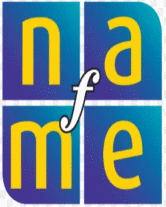Students discover the patterns in music that relate to the Fibonacci Sequence.
Objectives
- Students will be able to list some connections between mathematics and music.
- Students will describe the Fibonacci number pattern sequence, commonly called the Fibonacci Sequence, and explain some ways that it appears in music.
Materials
- A picture of a keyboard, prominently displayed in the classroom
Procedure
- Write six numbers of the Fibonacci Sequence on the chalkboard.
- Ask students to relate how the numbers are generated. Then, ask them to list the next nine or ten numbers in the sequence.
- Tell them a little about Leonardo of Pisa.
- Tell the students that mathematicians have found that an unusual quantity of items have Fibonacci numbers associated with them. For example, you can mention that in nature, poison ivy has the Fibonacci number 3. Wildflowers often have 5 petals.
- Ask the students to look around the room and find something that may have a Fibonacci number associated with it. Students should discover that a keyboard has 8 white keys, 5 black keys, and 13 notes all together in each octave. Also, the Pentatonic scale has 5 notes, the Diatonic scale has 8 notes, and the Chromatic scale as 13 notes all Fibonacci numbers!
- For further information, tell the students that the vibrations per second of different musical intervals are in Fibonacci ratios. For example, C and A are 264 cycles per second and 440 cycles per second a ratio of 3/5, two Fibonacci numbers. The minor sixth E to C is 330/528 = 5/8.
- You may want to ask more advanced music students to search for other Fibonacci ratios in musical scores. The ratios between the number of measures in a sonata exposition, the number of measures in the development and recapituation sections (together), and the movement as a whole often approximate Fibonacci ratios. The first movement of Bartok's Music for Strings, Percussion, and Celeste is a famous example of this means of organization.
Standards Correlations
Mathematics:
- Standard 3: Mathematics as reasoning
- Standard 4: Mathematics as connections
- Standard 8: Patterns and functions
Art Education:
- Standard 6: Listening to, analyzing, and describing music
- Standard 7: Evaluating music and music performances
- Standard 8: Understanding relationships between music, the other arts, and disciplines outside the arts
Excerpted from In Harmony with Education Program: Bose's Teacher Guide.





